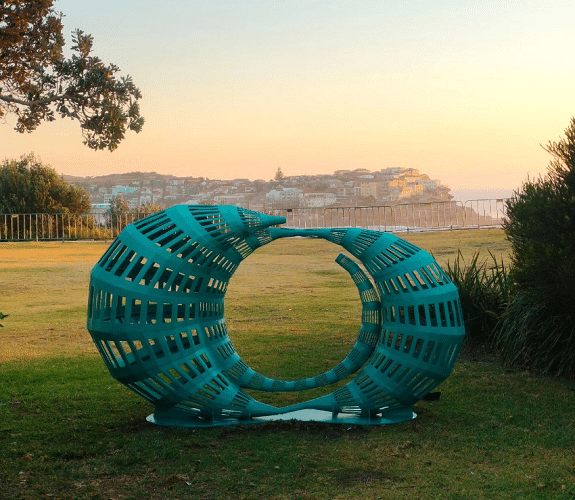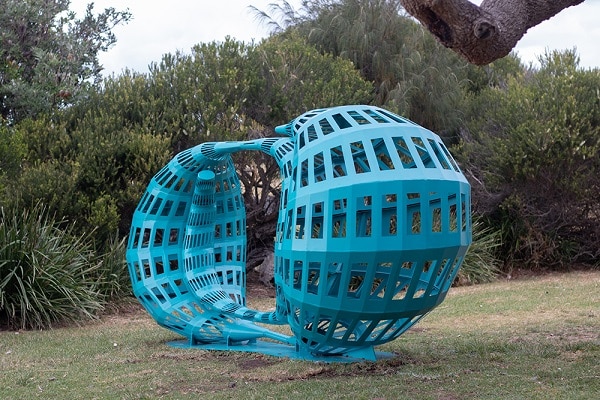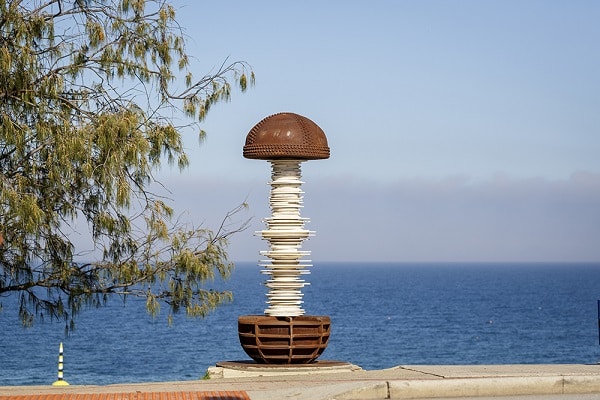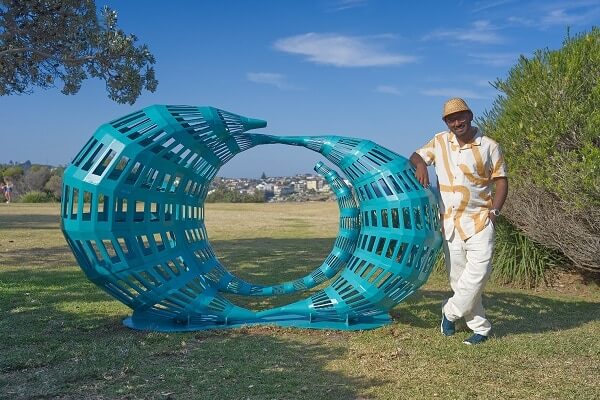When Harsha Durugadda saw birds drawn to his sculpture Brood at the ongoing Sculpture by the Sea at Bondi, he was thrilled.
“It made my sculpture complete,” he told Indian Link.
Brood sits in St Mark’s Park along the iconic Bondi to Tamarama coastal walk, attracting avian as well as human visitors.
Bright blue in colour, you could mistake it for basket weave from a distance, but as you get closer you realise it’s metallic.
“It’s made of corten steel, usually used in the shipping industry,” Durugadda described.

Short for ‘corrosive-resistant and tensile’, corten resists the corrosive effects of meteorological conditions – making it perfect for Durugadda’s piece at its outdoor location. Capable of being shaped or bent or drawn out, it also lends itself wonderfully to the artist’s central theme of embrace.
“Yes, the piece depicts a kind of embrace,” Durugadda revealed. “But it’s equally about opening up. Hence the gap in the middle.”
Terms which we use to describe our in-groups, like Family and Country, have become very tightknit, he noted. “Politically and also environmentally, we’ve become geographically closed. I think we need a bit of opening up. So my ‘embrace’ does not mean embrace very tightly, but embrace in a way that kind of allows other things to pass through, or allows other things to exist.”
At the individual level, think of it like a spiral, he said, where the whole family is connected and yet there’s space in the middle.

At the larger level, think of it as a portal that must open up to embrace the whole environment.
The local birds certainly seem to have embraced the structure.
“Yes, the magpies have been visiting,” Durugadda laughed. “The piece is positioned next to bushes, and a beautiful tree on which the birds sit. They come down to help themselves to the pockets of rainwater that get captured within the curves of the sculpture. It is a wonderful sight. The embrace of the local wildlife is, in many ways, exactly what I wanted to convey. When the birds made it their own, I thought, this is perfect!”
The Hyderabad-based JNU-trained artist has learnt a lot about native birds in his short time here in Sydney – such as the male satin bowerbird, which is attracted to the colour blue and collects blue items to decorate its nest.
This is Durugadda’s fourth appearance at Sculpture by the Sea – the second at Bondi and twice before at Cottesloe in Perth. His 2017 work Column of Sound won him the Rio Tinto Sculpture Award.

The award must surely make this Australian exhibition have a special place in his heart, but he says it is much more than that.
“I simply love the outdoor location, which is itself an artwork!” he exclaimed. “The sculptures change throughout the day with the lighting. Also, I see a difference in the way the visitors interact with our works – they are not dictated by the usual white cube gallery rules, and so they engage naturally.”
Would he like to see a similar exhibition in India, at a waterside venue?
“I’d love that,” he said. “If only we can find a sponsoring authority that would make it all financially viable!”
For the moment though, he’s enjoying the embrace of his Bondi embrace.
Sculpture by the Sea is on at Bondi until 6 Nov.
READ ALSO: Harsha Durugadda’s Column of Sound: Sounds sculpted by the sea





